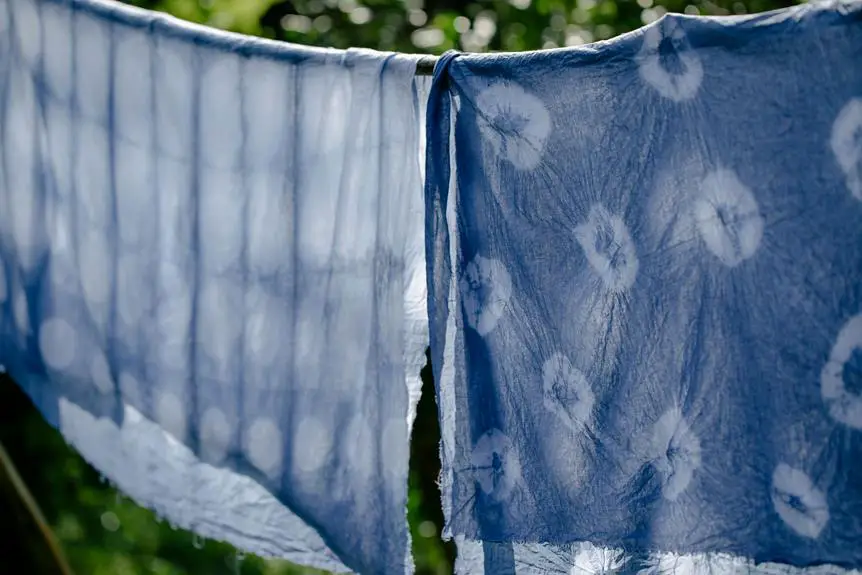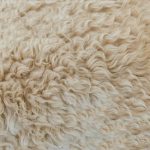When you consider dyeing microfleece fabric, you're faced with some unique challenges that require careful planning. The synthetic nature of the fibers means you need specific dyes to achieve the desired color, yet the fabric's tendency to repel water complicates dye absorption. Plus, pre-treatment processes demand attention to avoid damaging the delicate fibers. Color consistency often eludes even seasoned professionals, as multiple factors can impact the outcome. What strategies can you employ to navigate these hurdles effectively? Exploring the next steps could lead to surprising solutions.
Table of Contents
Understanding Microfleece Composition
Microfleece is typically made from polyester fibers, which give it its lightweight and insulating properties.
This fabric's unique structure creates tiny air pockets that trap warmth, making it ideal for cold-weather garments.
Since it lacks natural fibers like cotton or wool, microfleece offers several advantages, including moisture-wicking capabilities.
It can pull sweat away from your skin, keeping you dry and comfortable.
Understanding microfleece's composition doesn't just help you appreciate its benefits; it also influences how you dye it.
Polyester fibers are hydrophobic, meaning they repel water.
This characteristic affects how the fabric absorbs dyes, as traditional water-based solutions may not yield the vibrant colors you desire.
Instead, you'll often need to explore specialty dyes designed specifically for synthetic materials to achieve the desired hue.
Additionally, microfleece can be treated with finishes that enhance its performance.
These can include anti-pill treatments that prevent it from developing those annoying little fuzzy balls.
Knowing these aspects of microfleece can prepare you better for any dyeing process, ensuring your end results meet your expectations and maintain the fabric's integrity.
Selecting the Right Dye
When it comes to dyeing microfleece, choosing the right dye is crucial for achieving vibrant, long-lasting colors. Microfleece is typically made from polyester, so you'll want to select dyes specifically formulated for synthetic fabrics. Look for disperse dyes, which penetrate the polyester fibers effectively, ensuring more vibrant results compared to regular fabric dyes.
You might also consider the dyeing method. If you plan to use a washing machine, opt for dyes that work well in lower temperatures, as microfleece can be sensitive to heat. Pay attention to the dye's instructions; following them closely will help avoid muddy or uneven colors.
Additionally, check if the dye is suitable for the specific shade you have in mind. Some colors dye much better than others on synthetic materials, so it's wise to do a test swatch before going all in.
Pre-Treatment Challenges
Choosing the right dye is just the beginning, as pre-treatment of microfleece fabric presents its own set of challenges that can impact the final result. You'll need to address a few key factors to ensure your dye adheres properly and gives you the desired color.
- Cleaning the Fabric: Microfleece often has oils or finishes from manufacturing that can interfere with dye absorption. You'll want to wash the fabric thoroughly before dyeing to remove these residues.
- Choosing the Right Temperature: Pre-treatment can involve heat, but microfleece is sensitive to high temperatures. Excessive heat can damage the fibers, so you must find a balance that helps open the fabric while preventing damage.
- Testing Compatibility: Not all pre-treatment agents work well with microfleece. You need to experiment with various options, like alkaline solutions, to see what effectively prepares the fabric without negatively affecting its texture.
Achieving Color Consistency
Achieving consistent coloration in microfleece requires careful attention to dye application and technique. You have to consider several factors that can affect the final shade. The type of dye, temperature, time, and method of application all play pivotal roles in achieving uniform color.
Here's a quick guide to the elements influencing dye consistency:
| Element | Impact on Color Consistency |
|---|---|
| Dye Type | Different dyes absorb differently, affecting shade. |
| Temperature | Consistent heat ensures even dye uptake and saturation. |
| Application Method | Techniques like immersion or spraying can lead to varying results. |
| Time | Longer dyeing durations can deepen colors, but too long may lead to unevenness. |
| Fabric Pre-Treatment | Inadequate preparation can prevent effective dye bonding. |
When dyeing microfleece, it's vital to maintain control over these elements. Small variations can lead to stark differences in color, which is something you definitely want to avoid. Experimenting with test samples can provide insights before committing to larger batches.
Post-Dyeing Care Requirements
To maintain the vibrancy and longevity of dyed microfleece, you must follow specific post-dyeing care requirements. These fabrics can be sensitive, and proper care ensures they look great and last longer.
- Wash with Care: Always wash dyed microfleece in cold water using a gentle detergent. Avoid bleach, as it can fade the colors. If possible, wash your fabric separately to prevent color transfer.
- Avoid High Heat: When drying, opt for low heat settings, or better yet, air dry. High temperatures can damage the fibers and alter the color.
- Store Properly: When it's time to put your fabric away, store it in a cool, dry place. Avoid direct sunlight, as prolonged exposure can lead to fading and discoloration. Use breathable storage bags to prevent moisture buildup.
Frequently Asked Questions
Can I Dye Pre-Made Microfleece Garments?
You can dye pre-made microfleece garments, but results may vary. Ensure the fabric's dye compatibility, use the right dye, and follow instructions carefully. Testing a small area first helps you avoid unwanted outcomes.
How Does Dyeing Microfleece Differ From Other Fabrics?
Dyeing microfleece isn't like other fabrics because its synthetic fibers, made from polyester, resist dye absorption. You'll need special dyes and methods to achieve vibrant colors, which can be tricky compared to natural fabrics.
What Tools Do I Need for Dyeing Microfleece?
To dye microfleece, you'll need a dye suitable for synthetic fabrics, gloves, a large pot for boiling water, stirring utensils, and salt or fixative to enhance color absorption. Always read the dye's instructions for best results.
Can I Use Natural Dyes on Microfleece?
You can use natural dyes on microfleece, but you might face some challenges. Synthetic fibers don't absorb natural dyes as well as cotton or wool, so the colors may not turn out vibrant or long-lasting.
How Long Does the Dyeing Process Typically Take?
The dyeing process typically takes a few hours, depending on the method and type of dye you're using. You'll need to prepare the fabric and dye bath thoroughly to ensure even color distribution and saturation.
- How Does Ring Spun Cotton Affect Garment Fit and Shape Retention? - August 13, 2024
- What Are the Challenges in Producing Ring Spun Cotton? - August 13, 2024
- Is Ring Spun Cotton Suitable for Plus-Size Clothing? - August 13, 2024







